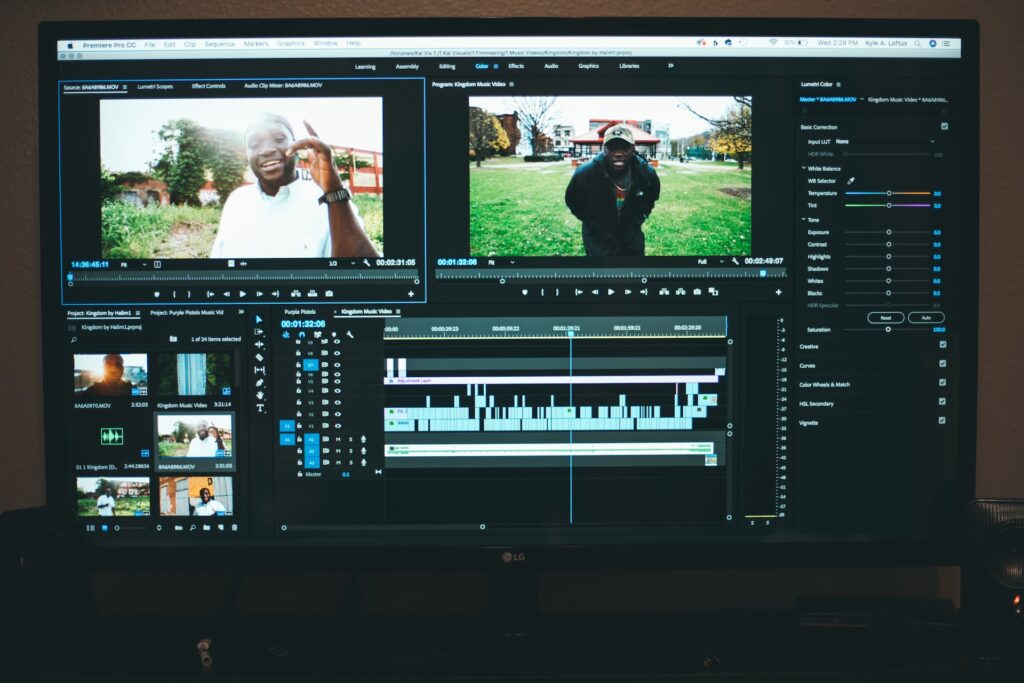The onset of modern internet marketing has found many business owners trying to find the best way to shoot a video. Since content is hosted on many different websites and platforms, there are also the best video formats for each platform to utilize. For example, an app like TikTok might prefer another video file format compared to websites like YouTube.
There’s no all-around solution for having the same video file format across all platforms. Not every device and browser will support the exact same file type, so keep this information in mind whenever you shoot a video.
This guide will cover all the best video formats depending on your project and the site you’re hosting it on! If you’re still not sure about which video file format to choose, feel free to ask us at The Outside Collective for professional help with your next creative project.
File Formats Explained

Much like image files, they are a way of naming and storing digital files on a computer. Since movies and film contain so much more data than a simple image, most of them are lossy and compressed after you shoot a video. This allows for efficient storage and file sharing. The best video formats are the ones that have just the right balance between size and quality.
Unlike codecs, a video file format stores metadata for your multimedia, including subtitles and other relevant information. Codecs, on the other hand, are what encode the multimedia data itself for your file. They’re pretty similar in function so most people get confused between the two! Just remember that your format is what wraps up the entirety of your film and makes it ready for sharing with the rest of the world.
There are many different types of files, all with their own pros and cons for each. Check out this list of the best video formats before you shoot one for your page!
Where to Use Each Video File Format

1. MP4
MP4 (or MPEG-4 Part 14) is one of the most versatile formats out there because most devices and platforms will generally accept MP4 uploads. It uses an MPEG-4 algorithm to store data including video, audio, and text.
Decent image quality is maintained while still keeping the file size to a minimum, so this is definitely a top contender. Content posted on Twitter, Youtube, Instagram, and even Facebook is commonly encoded in MP4.
2. MOV
QuickTime Movie, or MOV for short, encodes large files but preserves the quality of your multimedia (and even effects if you have any!). It was developed by Apple to be opened with QuickTime Player but most programs and websites will support this file type. MOV also uses MPEG-4 algorithms and can be supported by Facebook and YouTube. If file size isn’t an issue, MOV can be a superior choice to MP4. Just watch out for compression whenever you upload your content to social media platforms because it could decrease the quality of the image anyway.
3. WMV
Windows Media Viewer was developed by Microsoft back in the days of Windows Media Player. It’s similar to MOV because it tends to have a large file size while still retaining image quality. This is limited to just Windows devices (and some Android ones) though because you need to download Windows Media Player specifically if you want to view these on Apple devices. This is definitely a big setback for WMV, so if you need to export anything, it’s best to convert it to another video file format first for maximum compatibility.
4. WEBM
If you’re looking to shoot a video for your business website or storefront, WEBM or HTML5 is absolutely the way to go. This is one of the best formats for e-commerce sites because it can be compressed to a very small size while still being high quality. This means that it can be streamed easily even by users who have slower internet speeds.
It’s supported by most mainstream browsers like Chrome, Firefox, Opera, and Safari. A downside to WEBM is that it might run into some problems on mobile browsers or outdated players. Most web designers still opt to use WEBM, though, because it’s easy to integrate into a website – requiring minimal or no plugins at all.
5. AVI
AVI is one of the oldest out there, but it’s also part of the best video formats available today. It was developed back in 1995 by Microsoft but it’s still going strong due to its flexibility and stability when it comes to storing large files. It’s usually compatible with all systems, from Windows and Mac to Linux. It can even be burned onto DVDs if you’re in the mood for old-school film sharing!
AVI is great if you don’t need to stream large files, and it’s also fallen out of the loop as of late just because it’s so dated. It can still hold its own against the best video formats of the modern internet, though, so feel free to use this whenever you shoot a video.
6. AVCHD
Short for Advanced Video Coding High Definition, AVCHD is the best choice if your priority is quality and length. It’s supported by H.264 and MPEG-4 to create a powerful yet efficient format. Try working with AVCHD for feature films or AVCHD 2.0 if you’re experimenting with 3D content. It was created specifically to process data from Panasonic and Sony camcorders, so this might be your ideal format if you work with the same equipment.
No matter which format or codec you choose, quality content for your business is what inspires people to follow your brand. Like our work at The Outside Collective, always try to prioritize authentic experiences, people, and places that communicate purpose when you shoot a video.
Just create a message that resonates with the things that you stand for, and the rest will follow. Knowing the best ways to edit and export content is just the first step to effective digital marketing! Expand your team’s knowledge and connect with your audience so you can watch your business truly grow.
